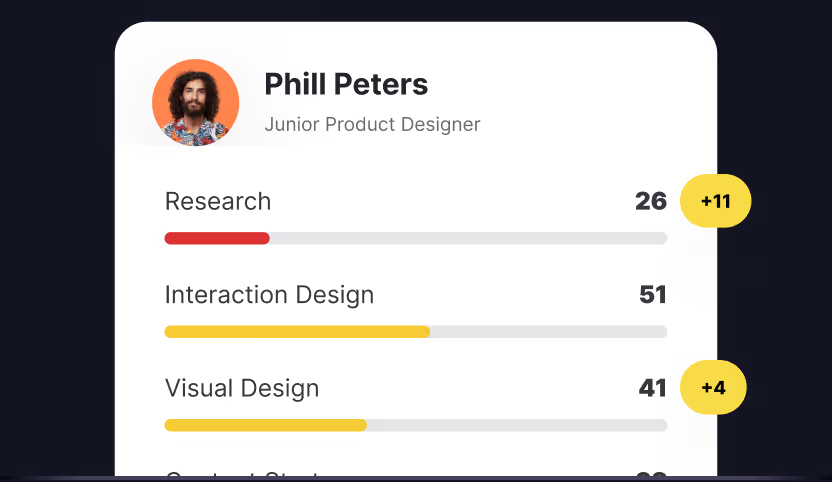
The first day I sat down to write a UX case study, I had no idea what I was doing. I remember that I wanted to write about an app that I was using constantly, called MyFitnessPal. I had done a bit of research, but when I sat down, my mind went blank and I ended up writing a 900-word diatribe about the social aspects of the app.
To this day, I can’t believe I had the audacity to show anyone this case study. When I showed my friend, he just laughed at it.
“This is a Medium article,” he said, “not a case study.”
When you’re starting out as a UX designer, you know that you need case studies for your portfolio. However, there’s not a lot of concrete information out there on exactly what should be in a case study. People have different expectations for UX case studies, but I’ll give you the 5 basic elements they should all include.
A quick note—case study styles are like Thanksgiving turkey recipes: everyone has one and they all come out a little different, but in the end it won’t ruin the holiday meal. As long as your case study is all meat and bone with no wasted space, it’ll be fine.
Step 1: Define the Scope
Ideally, the first paragraph should tell the reader what you’re planning to talk about. You may want to highlight a problem, show off a stunning design, or highlight a change.
Step 2: Define the problem
Readers of your case study want to see the problem clearly defined. An issue that new UX designers have often is identifying that there is a problem but not identifying the problem itself. A common bad statement might be something like “this app is frustrating for users and they have a high bounce / uninstall rate.” A better statement is something like “users have trouble accessing and understanding their account overview, and navigation to and away from this page is buried in menus.” This outlines the problem clearly and sets you up to solve it concisely over the next few paragraphs. If you’re designing an app from scratch, this section should talk about what problem you are hoping to solve, and why your solution is the cleanest and most effective one.
Step 3: Define the Audience
Not every app is for everyone. An easy example is something like Blind, which is a forum app designed for tech professionals, particularly engineers, to discuss work life at their jobs. Being designed for tech professionals means that it doesn’t have to necessarily be awe-inspiringly beautiful with jaw-dropping animations. It can be austere, and even a bit spartan since the people using it are working in a heavily analytical industry. Even the job posting section of their website is just an Airtable.
Understanding your target audience for a product will make analyzing the success of that product much simpler, as design, copy, and architecture should all work together cohesively.
Step 4: Solve the problem
There are several ways to do this in a single section, but generally, this should be a paragraph or two outlining A) what your solution for the problem is, and B) how you arrived at the solution to this problem. Both are vital to include. An easy way to start is to write something like “I decided to solve this problem by taking these actions,” before outlining the actions you recommend.
Step 5: Show your work
I’m an ignoramus, so algebra never came easy to me. I especially hated when I would arrive at the right answer and be asked to show my work. What does it matter how I got there? I got the correct answer, didn’t I? Let me be the Algebra II Top Gun of this school and leave me alone.
Unfortunately, in design case studies showing your work is necessary, and this is where you get a chance to show your UX design process. How did you arrive at this solution? What steps did you take to ensure that you were being circumspect in your reasoning? You can’t be the Diogenes of UX, hanging out in the middle of the agora shouting dichotomies and hoping someone listens. You have to walk the reader through each step of your thought process.
This is where you get to show off your screens, your prototyped animations, your Tableau repositories, your Typeform and Google Sheets research, your pivot tables, Miro flowcharts, Hotjar heat maps, and beautifully animated PyViz scatter charts. This is where you get to blow your reader’s mind.
Take a look at the case study example in Derrick's profile, one of the Verified Designers on Uxcel.
A quick tip:
Head over to Coolors or Adobe Color and pick out a nice cohesive palette to put all your research in. This is an easy way to ensure that it doesn’t confuse the reader (wait, red is good now?) and looks clean and consistent.
Writing a UX case study is incredibly important to your career path, especially when first starting out. However, by ensuring that you have every necessary step in your case studies, you can create beautiful qualitative and quantitative research and design that blows your readers’ minds and lands you your dream job. Happy hunting!




